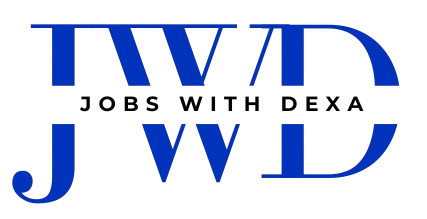Introduction: The Remote Conductor of the Tech Orchestra
The role of a Product Manager (PM) is one of the most pivotal and misunderstood in the tech industry.
Often described as the "CEO of the product," a PM is the central hub, the orchestra conductor who ensures that the engineering, design, marketing, and business teams are all playing in harmony to create a product that users love and that achieves business goals.
Now, take that complex, communication-heavy role and make it fully remote. The challenge intensifies, but so do the opportunities for focused strategy and global perspective. A remote Product Manager must be a master of asynchronous communication, an expert in digital collaboration tools, and incredibly disciplined.
Have you ever wondered what a remote PM actually does all day? How do they herd cats across multiple time zones? This in-depth look will walk you through a typical day, the core responsibilities, the essential tools, and the lucrative career path of a remote Product Manager.
The Setting: The Remote PM’s Digital Toolkit
Before diving into the day, it’s crucial to understand the digital environment where a remote PM lives. Their success depends on their mastery of a suite of collaboration tools:
- Communication Hub: Slack or Microsoft Teams is the virtual office floor for real-time updates, quick questions, and team bonding.
- The Source of Truth: Jira or a similar tool (Asana, Linear) is the command center for the development process. It’s where user stories, bugs, and tasks are tracked.
- The Whiteboard: Miro or FigJam serves as the digital whiteboard for brainstorming sessions, user journey mapping, and strategic planning.
- The Design Canvas: Figma is where the PM collaborates with UX/UI designers, leaving comments on prototypes and reviewing user flows.
- The Data Dashboard: Tableau, Looker, or Amplitude provides the quantitative data on user behavior that informs product decisions.
- The Meeting Room: Zoom or Google Meet is used for all synchronous, face-to-face collaboration.
A Day in the Life: A Tale of Two Halves
The day of a remote PM can often be split into two distinct phases: a morning of deep, focused work and an afternoon of collaborative meetings.
Morning (9:00 AM – 12:00 PM): Asynchronous Focus & Strategic Deep Work
The day doesn’t start with a flurry of meetings. It begins with absorbing information and setting the stage for the day.
- 9:00 AM – 9:45 AM (Information Download): The first hour is spent catching up asynchronously. This involves reading through Slack channels from overnight (especially with a globally distributed team), checking emails, and reviewing the product’s key performance indicators (KPIs) on a data dashboard. Is user engagement up? Did the latest feature release cause a spike in support tickets?
- 9:45 AM – 10:15 AM (Jira & GitHub Review): The PM scans the Jira board to see the progress on the current sprint. They’ll check for any comments from developers, review pull requests in GitHub to stay in the loop, and ensure there are no immediate blockers.
- 10:15 AM – 12:00 PM (Deep Work Block): This is the most critical, uninterrupted time for strategic work. This is when the real "product thinking" happens. Activities during this block could include:
- Writing a Product Requirements Document (PRD): Creating a detailed document for a new feature that outlines the problem, the proposed solution, user stories, and success metrics.
- Roadmap Planning: Reviewing and updating the product roadmap for the next quarter, prioritizing features based on impact and effort.
- Analyzing User Feedback: Sifting through user interviews, survey results, and support tickets to identify pain points and new opportunities.
- Competitive Analysis: Researching what competitors are doing and how the market is evolving.
Afternoon (1:00 PM – 5:00 PM): The Collaboration Gauntlet
The afternoon is typically when most meetings are scheduled to accommodate various time zones. A remote PM’s job is to make these synchronous moments as efficient and productive as possible.
- 1:00 PM – 1:30 PM (Daily Stand-up & Engineering Sync): The PM joins the daily stand-up with their engineering squad. The goal isn’t to get a status report, but to listen for blockers and help the team solve problems.
- 1:30 PM – 2:30 PM (Backlog Grooming/Refinement): The PM leads this meeting with the engineering team. They present user stories for upcoming sprints, answer questions, and work with the team to estimate the effort required for each task.
- 3:00 PM – 4:00 PM (Design Review & User Research Sync): The PM meets with the UX/UI designer to review new mockups in Figma. They provide feedback based on product requirements and user needs. They might also sync on the results of a recent usability test.
- 4:00 PM – 4:45 PM (Stakeholder Meeting): The PM meets with stakeholders from marketing, sales, or leadership. They present progress on the roadmap, share key insights from user data, and ensure everyone is aligned on the product’s direction.
- 4:45 PM – 5:00 PM (End-of-Day Wrap-up): The PM quickly triages any new messages and plans their priorities for the next day.
The Core Responsibilities Beyond the Schedule
While the schedule provides a structure, the core responsibilities of a PM are fluid and ongoing.
- Defining the "Why" and "What": The PM’s primary job is to represent the user and the business. They are responsible for defining the product vision, strategy, and roadmap. They decide what gets built and why.
- Prioritization: A PM is constantly faced with more ideas and requests than the team can possibly build. Their most leveraged skill is the ability to say "no" and ruthlessly prioritize the work that will have the greatest impact.
- Communication and Alignment: This is arguably over 50% of the job, especially in a remote setting. The PM must ensure that every single person—from the newest engineer to the CEO—understands the product’s goals, the current priorities, and the user problems being solved. This involves a massive amount of written communication.
Salary and Career Path
The Product Manager role is not only impactful but also financially rewarding.
- Salary: Compensation varies by company and experience, but it is highly competitive.
- Product Manager: $100,000 – $150,000+
- Senior Product Manager: $140,000 – $190,000+
- Group/Principal PM or Director of Product: $180,000 – $250,000+
- These figures often include significant stock options and bonuses.
- Career Path: The PM career ladder offers substantial growth.
- Associate PM -> Product Manager -> Senior PM -> Lead/Principal PM -> Group PM -> Director of Product -> VP of Product -> Chief Product Officer (CPO).
Conclusion: The Remote Heartbeat of the Product
Being a remote Product Manager is a demanding role that requires a unique blend of strategic thinking, analytical rigor, user empathy, and world-class communication skills. You are the context-keeper, the chief prioritizer, and the ultimate champion for both the user and the business. While the day is a constant juggle between deep strategic work and a flurry of collaborative meetings, it’s an incredibly rewarding career for those who love to solve complex problems and bring innovative ideas to life.

